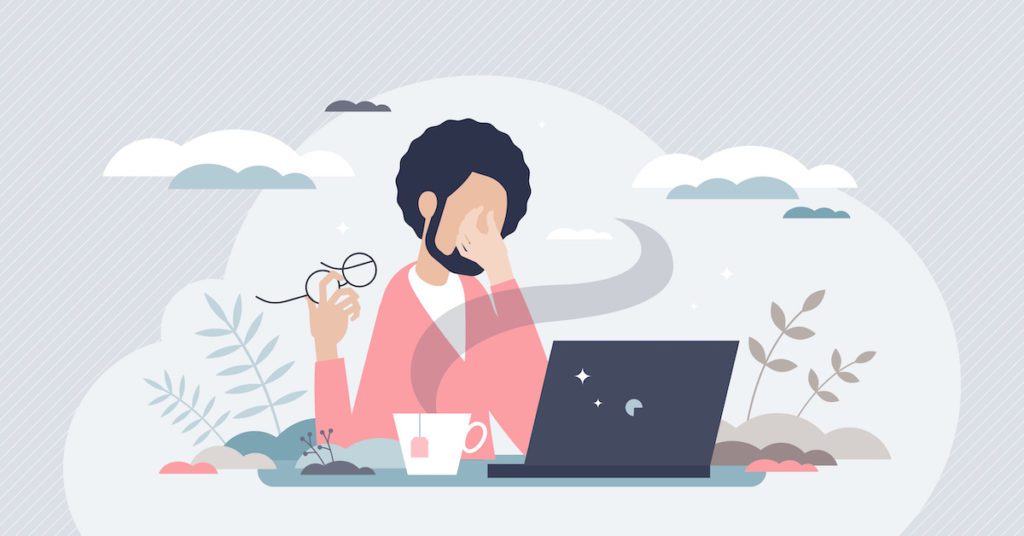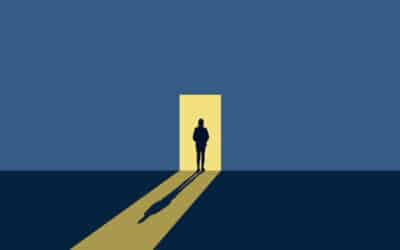Fatigue, headaches, dry eye — our screen time is doing a number on our health. We get some tips from an optometrist on how to combat digital eye-strain.
With screen time perpetually on the rise, it seems wise to start paying attention to how all that sitting and scrolling is affecting your body — particularly your peepers. We get some tips on how to fight against eye strain and other eye issues from Dr. Mark Cannon, a Seattle-based optometrist.
“It turns out we did not evolve around computers, so the human visual system is not optimized for staring at a lighted screen at a fixed distance for long periods of time,” says Mark. “As we look at things up-close, our eyes have to flex a muscle to change the shape of our intraocular lenses.”
He offers an analogy: Imagine for a moment that, as you stare at your screen, you are holding up a 2-pound dumbbell. It’s only 2 pounds, but after 15 to 20 minutes your arm is going to feel pretty exhausted.
He and his wife, Dr. Miranda Cannon, provide full-scope medical optometry at their family business, Cannon EyeCare — and a big part of their practice is helping patients find ways to reduce digital eye-strain, and the related fatigue and dry eye that make finishing your workday that much harder.

Many patients can reduce eye-muscle strain by wearing a special computer prescription. These glasses have powers optimized for your computer working distance, which is typically about 24 inches for large or dual-monitor setups, and more like 19 for most laptop workstations. This type of work glasses is typically something that people leave on their desk and wear when doing more than five minutes of email.
“These glasses won’t work for driving,” he says, “in fact, if they are set up properly, everything beyond arm’s length will be out of focus. This setup significantly reduces the amount of work your eye muscles need to do; kind of like swapping out the 2-pound dumbbell for a 1-pound dumbbell.”
Staring out the window is good for you
Even with proper computer glasses, though, it’s crucial to take regular breaks from your screen to relieve digital eye-strain. This concept is often referred to as the 20/20/20 rule. “Every 20 minutes, look at least 20 feet away — out the window for instance — for at least 20 seconds,” Mark advises. “This allows the muscles in your eyes to fully relax, which helps immensely.”
Since computer settings can also impact eye strain, it’s smart to assess your monitor’s brightness. “Many people have their screen set to maximal brightness, which causes your iris to flex, thus reducing light coming in,” he says. “Turning your monitor down to about 50 percent brightness is a great start.”

He adds that the high-intensity blue light emitted by our screens also contributes to eye strain, can cause insomnia, and may even increase our risk of age-related macular degeneration (AMD) later in life. Screen settings can soften the colors to a less blue and more amber hue. On the iPhone you can do this by turning on Night Shift mode; on most computers, this effect can be achieved by using a free app called f.lux.
And an option they like using at Cannon EyeCare — and that can be discussed with any optician: ophthalmic lenses in your computer glasses that limit the amount of blue light getting through. “Non-prescription, blue-blocking lenses may also be helpful and are less expensive,” adds Mark.
Wherever your workspace, it’s a good idea to reduce glare by operating from a well-lit room — but not so bright that the light washes out the on-screen image. Many people find an overhead fluorescent light to be optimal. (Healthy Computing, experts in office ergonomics, has more lighting tips here.)
Keep hydrated … and don’t forget to blink!
To remedy dry eyes, Mark says most patients only need to stay hydrated, keep their lids clean and healthy, and blink well. A good rule of thumb: If your eyes are feeling irritated while you’re on the computer, it’s probably time for a break. You can also try some of the Cannons’ preferred artificial tear brands like Systane Complete and Refresh Relieva. Many patients with dry-eye issues also benefit from taking an omega-3 supplement like this one by Nordic Naturals. You can learn more about dry-eye disease here.
Tweaking our diet can protect eye health, too. “Staying physically fit and eating a Mediterranean diet rich in leafy greens, vegetables, fish and olive oil will help protect eye health long term,” says Mark. Naturally, setting up annual eye exams with your local optometrist is recommended, as well.
Here’s to having the 20/20 foresight to protect yourself from digital eye-strain!




